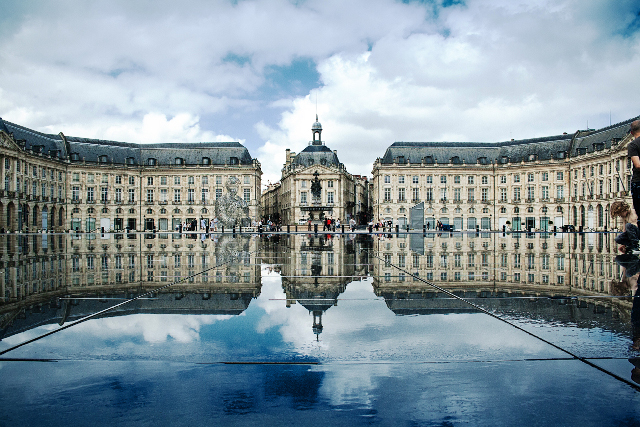|
|
|
Navigation
SUPPORT
|
JNRH 2020 Les JNRH 2020 auront lieu cette année les 25 et 26 juin dans un format virtuel.
Informations importantes Lieu : web Dates : 25 et 26 juin 2020 Date limite inscription et contribution : 04 juin 2020 Acceptation : au fil de l'eau Langue : support de présentation en anglais, présentation et discussions en français ou en anglais en fonction de l'auditoire Organisation / General Chair : Vincent Padois (Auctus, Inria Bordeaux Sud-Ouest) A propos Les Journées Nationales de la Robotique Humanoïde 2020 sont organisées par l'équipe projet Auctus d'Inria Bordeaux Sud-Ouest en collaboration avec l'équipe d'animation du GT7 dur GDR Robotique. Elles se déroulent cette année les 25 et 26 juin 2020 dans un format virtuel afin d'accomoder les contraintes de distanciation sociale induites par la pandémie de COVID-19. Les modalite de participation restent à déterminer de manière précise mais le principe général retenu est celui d'une salle virtuelle ouverte pendant deux jours et dont les fonctionnalités permettront de réaliser des présentations vocales avec support partagé, des séances de question/discussions (questions écrites, réponses orales) et des échanges par messagerie instantannée entre participants. Objectifs Ces journées ont pour objectif de "réunir" la communauté nationale de la recherche en robotique, académique et industrielle, autour des problématiques scientifiques de la Robotique Humanoïde. Ces problematiques sont multiples: conception mécanique et mécatronique, modélisation, commande, optimisation numérique, planification, perception, intelligence artificielle, analyse du mouvement,.... Un deuxième objectif est d’ouvrir les réflexions de la communauté humanoïde à celles de la communauté des sciences du vivant et notamment les domaines de la biomécanique et des neurosciences, afin de pouvoir s’enrichir mutuellement de nos connaissances et résultats réciproques. Le troisième objectif est de favoriser les échanges entre les chercheurs du domaine. Présentations invitées Christian Duriez, Directeur de Recherche InriaÉquipe projet DEFROST, Inria Lile - Nord Europe "Physics-based modeling of deformable robots for real-time simulation and control" Continuum mechanics provide accurate mechanical models for deformable solids. Numerical tools, like the Finite Element Methods (FEM), solve the partial differential equations with the major drawback of being time consuming. This presentation will show that there are some solutions to make FEM models fast enough to be compatible with real-time simulation and control methods, that can be also mixed with learning approach. For soft robotics, this provides a very powerful tool to help the design and the control, in particular for complex interaction with the environment. We will also show that this work can be mixed with more standard articulated and rigid models. Finally we will present quickly our software platform and the performance of this approach for modeling, simulation and control of soft-robots.
Equipe Rhoban, Université de Bordeaux
Projet Rhoban, LaBRI -- Université de Bordeaux "The Rhoban robot: world champion of the Humanoid Kid-Size league at RoboCup" Founded in 1997, RoboCup is the world's largest robotics competition. Today, organized around fifteen leagues, it is based on the challenge of creating a team of robots playing soccer. Olivier Ly and Grégoire Passault, from the University of Bordeaux, look back on their experience since 2013 in the humanoid soccer kid-size league, in which their Rhoban team is quadruple world champion.
Florent Lamiraux, Directeur de Recherche CNRS"How to reconcile path planning and visual servoing through manipulation tasks" Performing manipulation tasks with a mobile, possibly legged robot requires to use perception to precisely localize the objects to manipulate with respect to the robot. Visual servoing on the one hand is an important corpus of work that has developed a lot of methods to control a robot based on visual features. If the robot has many degrees of freedom and moves in a cluttered environment however, path planning in the robot configuration space is required. In this talk, I will present on-going work that attempts to integrate motion planning techniques with visual servoing methods. First, I will explain how we generate motions to solve manipulation planning task - also called Task and Motion Planning (TAMP). Then I will show how to integrate visual servoing to control the motion execution on the robot. The talk will be illustrated by the example of a humanoid legged robot manipulating an object.
Participation et contributions Comme pour les années précédentes, les journées seront principalement constituées par l'intervention de chercheurs invités et des présentations orales sélectionnées parmi les contributions soumises (~20 minutes). Soumission d'un abstract d'une à deux pages double colonnes en Anglais et au format PDF. Afin de dimensionner au mieux le dispositif, il est important que chaque participant potentiel s'inscrive ici. |
| Personnes connectées : 2 | Vie privée |

|


